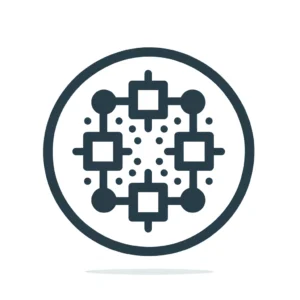Blockchain’s Transparency Paradox: Balancing Oversight with Confidentiality
The narrative that blockchains are a lawless digital frontier is no longer valid. Traditional finance is embracing blockchain technology, and institutions like Deutsche Bank are developing their own solutions to leverage its potential. However, they face the challenge of reconciling the transparency of public ledgers with the discretion required by serious financial transactions.
Deutsche Bank’s purpose-built blockchain aims to address regulatory compliance issues and prevent accidental transactions with bad actors or sanctioned entities. As global assets move on-chain, the need for selective disclosure and confidential computing is becoming increasingly important.
The Rise of Blockchain Surveillance
The crypto market’s growth to over $3 trillion has led to increased surveillance of blockchain transactions. Regulators have taken notice, with dedicated crypto-crime units established in major financial centers. The EU’s Anti-Money Laundering Authority is also keeping a watchful eye on crypto-asset providers.
However, this increased transparency has also raised concerns about privacy. Many early adopters of cryptocurrency, such as Hal Finney, were prominent figures in the privacy and cryptography space. The concept of privacy in crypto is often misunderstood, with some thinking it means complete anonymity.
Privacy is the power to selectively reveal oneself to the world.
Smart Privacy: The Solution to Blockchain’s Transparency Paradox
Smart privacy offers a solution to this paradox, enabling selective disclosure and customizable confidentiality within blockchain applications. This approach leverages trusted execution environments (TEEs) to secure data and ensure it remains private during processing.
Marko Stokic, Head of AI at the Oasis Protocol Foundation, notes that this evolution in privacy architecture mirrors broader shifts in institutional thinking. “The goal isn’t to obscure information wholesale but to engineer systems that can distinguish between necessary oversight and needless exposure.”
Selective Disclosure as a Public Good
Selective disclosure is not just good theory; it’s good practice. Blockchain sleuths have demonstrated the importance of transparency in tracking illicit transactions. However, the same radical openness that helps catch criminals can imperil legitimate business.
The answer lies in building smarter systems that offer verification without exposure. Confidential computing tools like TEEs or cryptographic tools like zero-knowledge proofs enable selective disclosure protocols that provide a middle path.
Targeted Transparency: The Future of Blockchain Regulation
The crypto industry’s early battle cry of “don’t trust, verify” was never meant to mean “verify everything, all the time, by everyone.” What’s required now is a regulatory framework that embraces targeted transparency: visibility where it serves the public good and privacy where it protects legitimate interests.
Stay up-to-date with the latest news and trends in the world of cryptocurrencies and blockchain technology on Global Crypto News.
























